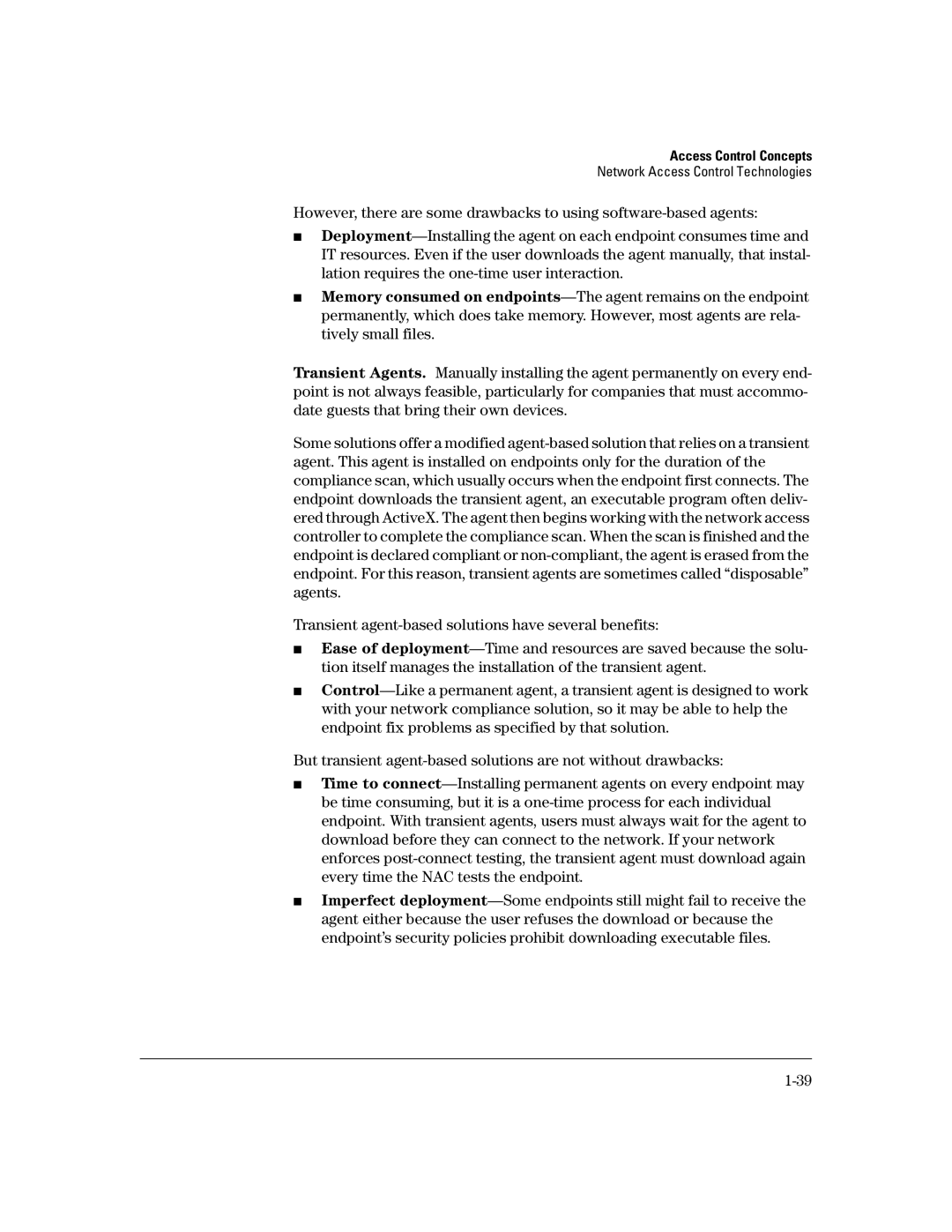Access Control Concepts
Network Access Control Technologies
However, there are some drawbacks to using
■
■Memory consumed on
Transient Agents. Manually installing the agent permanently on every end- point is not always feasible, particularly for companies that must accommo- date guests that bring their own devices.
Some solutions offer a modified
Transient
■Ease of
■
But transient
■Time to
■Imperfect
